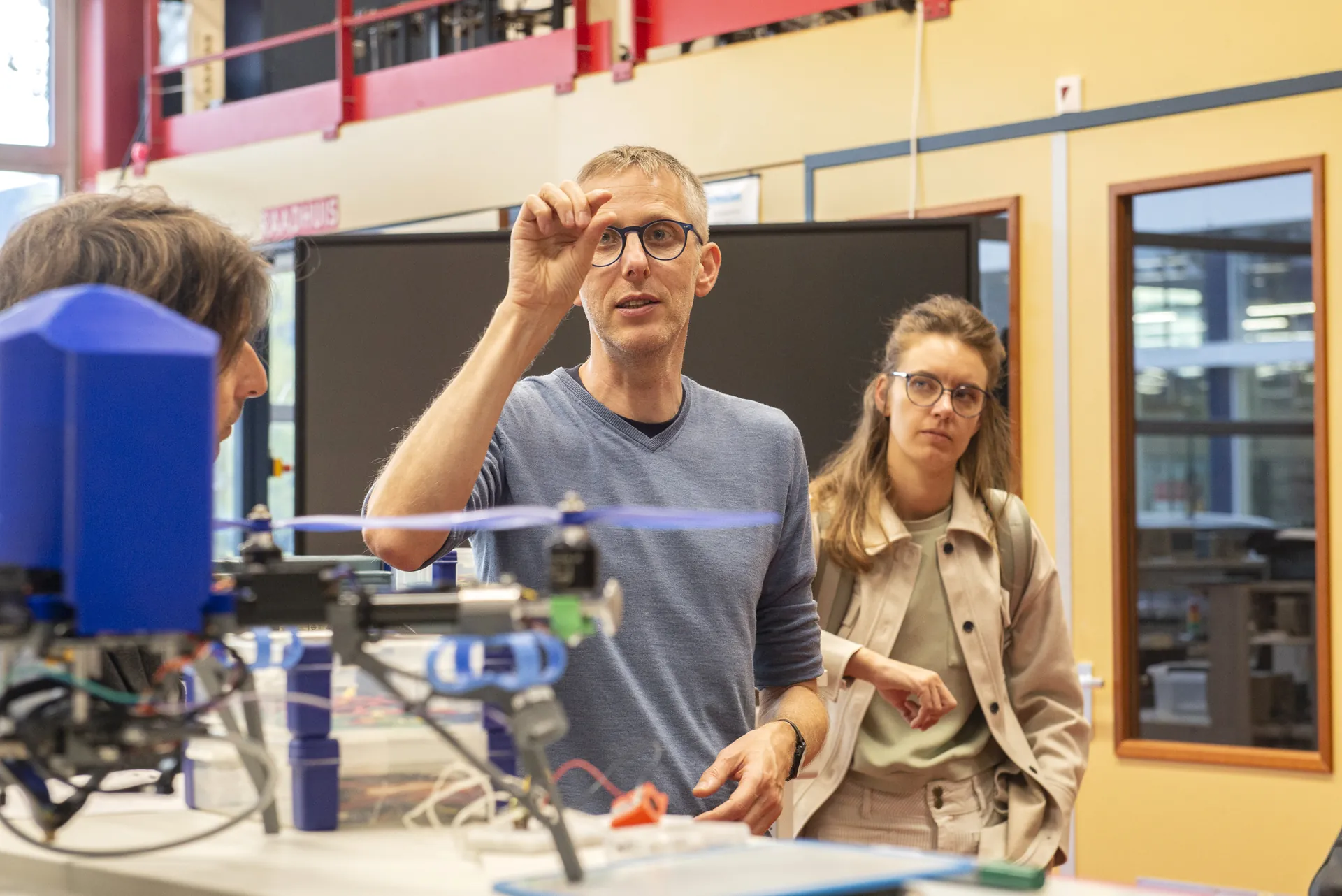The first of five sessions explored how high-tech and science can gain a stronger foothold in secondary education. How can the world of quantum technology be brought closer to students and teachers in secondary schools? That was the central question for the “Q-team” on September 25, when the inaugural edition of Hi-Tech & Science on Tour was hosted at the Leidse Instrumentmakers School (LiS).

The first of five sessions explored how high-tech and science can gain a stronger foothold in secondary education. How can the world of quantum technology be brought closer to students and teachers in secondary schools? That was the central question for the “Q-team” on September 25, when the inaugural edition of Hi-Tech & Science on Tour was hosted at the Leidse Instrumentmakers School (LiS).
When Michiel Thijssen, physics teacher and manager of a quantum education lab at Leiden University, asked who among the audience was already engaging with quantum, only a few hands were raised. In the lower years of secondary education, in particular, quantum still plays hardly any role. “That’s something we want to change,” Thijssen explained. “In the Netherlands, we are working with a broad group of partners within the Quantum Delta NL program to advance quantum technology, including its educational dimension. It’s a major initiative, with substantial investment not only in research and innovation but also in talent development. From primary school to university, we aim to spark curiosity among the youngest generations.”
The choice of the LiS as venue was far from coincidental. Since 1901, its students have collaborated with physicists on designing and building highly complex precision instruments for groundbreaking research. From glassware and optics to components for space exploration and quantum computers, LiS has long been a unique bridge between theory and practice. During a tour of the workshops, visitors saw classical lathes standing alongside cutting-edge CNC machines and witnessed how students work in small teams to design and prototype. “This feels like a candy store,” one physics teacher remarked enthusiastically. “There are so many opportunities here for my students, especially those struggling with their final projects.”
Educational developer Gunter Helms showcased several teaching tools co-created with LiS students, such as a Bloch Sphere controlled via a computer game, allowing users to explore and visualize quantum states. Even primary school pupils can begin discovering quantum concepts in playful ways—for instance, through Tiq-taq-toe, a game that introduces superposition and entanglement.
The Q-team supports schools in creating lessons and projects on high-tech and quantum, with an approach that extends well beyond physics. Mentor classes, project weeks, and interdisciplinary assignments are all part of the toolbox.
“The idea is to keep building on this,” Thijssen concluded. “We want to develop a menu of options schools can choose from—ranging from guest lectures to student-led projects. Tell us what you need, and we’ll make sure something valuable takes shape.”